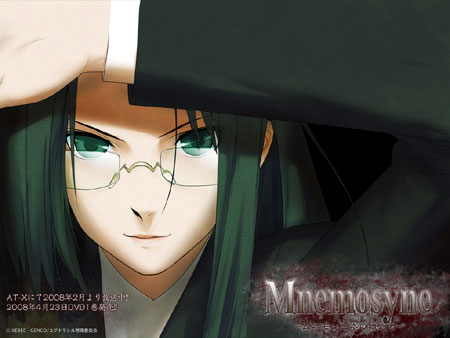Ask John: Will Mnemosyne Reach America?

Question:
What are the chances of seeing the 6 episode Mnemosyne OVA licensed in America? What is your opinion of the show?
Answer:
Given my personal penchant for anime of the 1980s and early 90s, it’s inevitable that I’d be a fan of the 2008 Mnemosyne television series. (I’m aware that the length of the episodes, and the total of only 6 episodes suggests that Mnemosyne should be considered an OVA series, but the program was promoted as a Japanese television broadcast series, so I consider it a TV series.) The 1980s and early 90s were rife with anime about female detectives and warrior women, including Dirty Pair, Fandora, Ohayo Althea, Iczer-1, Megami Paradise, and Tatoon Master just to name a few. With its components consisting of attractive women, sex appeal, a sci-fi/fantasy theme, plenty of gruesome gore, and a somewhat indecipherable story that fills in narrative gaps with pure atmosphere, Mnemosyne practically is an 80’s or early 90’s anime production animated in 2008. In particular, Mnemosyne seems to owe a lot to the 1992 Joker: Marginal City OVA, and to a lesser, but still evident degree, the 1993 GS Mikami television series and 1994’s Yuugen Kaisha OVA series.
In a stronger, more prolific American licensing environment, such as the state of the American anime industry around 2004, I would call Mnemosyne an inevitable domestic release. The show is adult, stylish, smart, sexy, and violent. With the exception of having a strong leading male character, Mnemosyne provides everything that many American anime viewers appreciate about anime. In fact, even in today’s more reserved licensing environment, I’m still a bit surprised that a domestic license for Mnemosyne hasn’t been picked up, especially in light of the fact that the similarly themed Darker Than Black and the similarly complex and violent Baccano have been released domestically. The American success of Claymore signifies that viewers are willing to watch a compelling, violent fantasy anime predominantly starring an entirely female cast. And the domestic success of Death Note signifies that Americans are willing to support a cerebral crime thriller with fantasy overtones.
I’m not privy to the details surrounding the international licensing details for the Mnemosyne anime, so I can only speculate at two possible reasons why the series hasn’t yet been confirmed for American release. The most probable explanation may be cost. Considering the length and production quality of the six Mnemosyne anime episodes, the series was probably not cheap to produce, so its licensing cost may reflect a percentage of that production expense. Anime licensing fees may be coming down from the stratospheric heights of the early 2000s, but domestic licensors that have to carefully ration their licensing budgets may be looking at other titles with wider American market potential that have a similar licensing cost. While I definitely believe that there’s a potential American audience for Mnemosyne, that audience probably is smaller than the potential audience for other, more accessible and mainstream anime that cost the same amount to license.
The second possible reason why Mnemosyne hasn’t been acquired for domestic release may be due to its relative obscurity. Despite being a recent release, its short length and its television broadcast on only one network made the show easier to slip by unnoticed compared to longer television series that receive more media coverage and exposure. Impressive, atmospheric, and adult oriented OVA series featuring sensual, violence prone women turn up occasionally in Japan’s anime community. But these modern shows, like Mnemosyne and the 2004 Shadow OVA series contravene the prevailing interest of Japan’s anime viewers, and seem to get widely overlooked by much of America’s anime community. As a result, the American anime fans that pine for these shows continue to hope for domestic releases in vain while the rest of the anime community focuses its attention of other better known and more mainstream productions.
Add a Comment
You must be logged in to post a comment.


I find it interesting that John refers to Claymore as a success. The show has sold quite poorly at B&M stores like Best Buy. Recently, we sent all our Volume 1’s back due to poor sales, and the boxes were pulled at the beginning of the year. There a strong possibility that this title may be moved online only, or only to higher revenue stores due to it’s slow sales for us. But online and retail sales are two different beasts, if John and Robert’s Anime Corner are to believed.
But I have to agree that it’s surprising this show hasn’t been licensed, but it’s nearly impossible to guess what will be licensed anymore. The economy sucks, and the cutbacks at Best Buy are hitting the anime companies hard. Bandai and Funimation are especially going to have to be careful due to their very heavy B&M exposure.
For the two of you and the dog who still doesn’t know, Funimation licensed this and released it here as Rin: Daughters of Mnemosyne. I got it on DVD myself, but it’s also available on (upscaled) Blu-Ray.